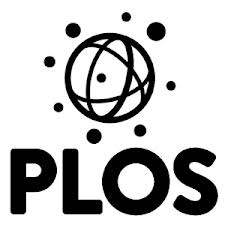 Baker BK (2016) Trans-Pacific Partnership Provisions in Intellectual Property, Transparency, and Investment Chapters Threaten Access to Medicines in the US and Elsewhere. PLoS Med 13(3): e1001970. doi:10.1371/journal.pmed.1001970
Baker BK (2016) Trans-Pacific Partnership Provisions in Intellectual Property, Transparency, and Investment Chapters Threaten Access to Medicines in the US and Elsewhere. PLoS Med 13(3): e1001970. doi:10.1371/journal.pmed.1001970
Introduction:
A new Pacific-Rim trade agreement threatens future access to affordable medicines in the United States and abroad. Buried in 6,000-plus pages of text, annexes, and side letters, there are multiple provisions—complex in their articulation, but simple in their effect: they dramatically increase monopoly protections for the transnational originator pharmaceutical industry.
With the Trade Promotion Authority, a procedure for accelerating congressional approval of trade agreements, enacted after a brutal and circuitous congressional battle in June [1], parties to the Trans-Pacific Partnership Agreement (TPP) finally reached a draft agreement on October 4, 2015 [2], and released the text one month later [3]. This trade pact, negotiated by the US for more than five years, involves 12 countries controlling nearly 40% of the global economy. The biggest players are the US and Japan, but there is a mix of other rich and middle-income countries, including Australia, Brunei, Canada, Chile, Malaysia, Mexico, New Zealand, Peru, Singapore, and Vietnam. Critical issues affecting future access to affordable medicines are at the center of the agreement.
One of the most contentious chapters in the TPP is the Intellectual Property (IP) Chapter [4], whose patent, undisclosed-test-or-other-data, and enforcement provisions could dramatically affect access to affordable medicines. Equally contentious is the Investment Chapter [5], in which protection of IP-related investments and investor-state-dispute settlement (ISDS) give drug companies powerful tools to protect monopolies on medicines. An annex to the Transparency Chapter [6] risks negatively impacting access to medicines because of increased applicant access to medical product listing decisions. TPP negotiations had been controversially conducted in strict secrecy (except for hundreds of cleared industry advisors on trade advisory committees), with zero official public access to proposed texts [7]; even members of Congress complained about their limited access [8].
TPP parties have been negotiating against a backdrop where there has already been global harmonization of minimum standards of protections for pharmaceutical IP rightholders. In 1994, countries adopted the World Trade Organization (WTO) Agreement on Trade Related Aspects of Intellectual Property Rights (TRIPS) [9], which established baseline, harmonized standards for the protection and enforcement of patents, trademarks, copyrights, and trade secret regulatory/clinical trial data. With respect to patent rights, TRIPS provides for a minimum term of 20 years of patent protection and prohibits countries from excluding patents on pharmaceutical products, a policy position previously held by nearly fifty countries, including India and Brazil. Although it is true that TRIPS prescribes minimum IP protections, it also outlines key public health flexibilities—in other words, it partially balances the rights of inventors and creators, users, and the public-at-large. In particular, least-developed and developing countries were given transition periods within which to become TRIPS-compliant, and all WTO members have rights to issue compulsory licenses (allowing some degree of generic competition), to allow parallel importation (buying abroad at a cheaper price), to define more stringent standards of patentability (reducing frivolous and secondary patents), and to adopt exemptions, limitations, and exceptions to IP rights (such as research rights and early-working/Bolar rights).
As revealed in earlier leaked drafts of the TPP, the most protective, TRIPS-plus proposals for pharmaceutical rightholders are those put forward by the office of the US Trade Representative (USTR). The USTR touted its IP proposals as being good for US exports, for jobs in its creative industries, and for innovation of new technologies. Although some troubling proposals were removed from the final text, like provisions mandating patents on new forms of existing medicines and prohibitions against patent opposition procedures, the TPP still contains many provisions that restrict TRIPS-compliant policy space to improve the quality of patents and to use flexibilities to bypass patent and other IP monopolies to encourage generic competition and other cost-controlling and research-enhancing measures.




